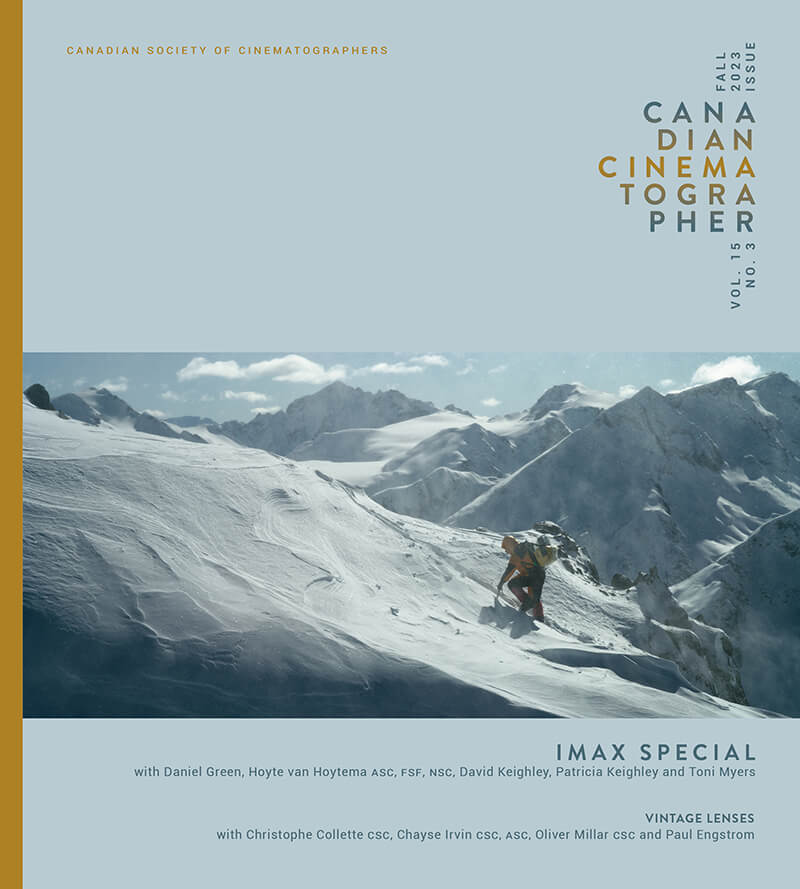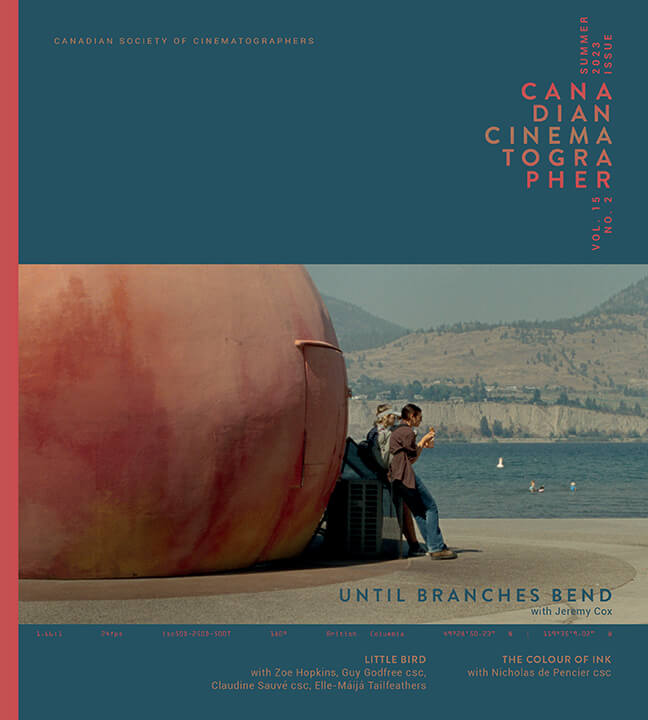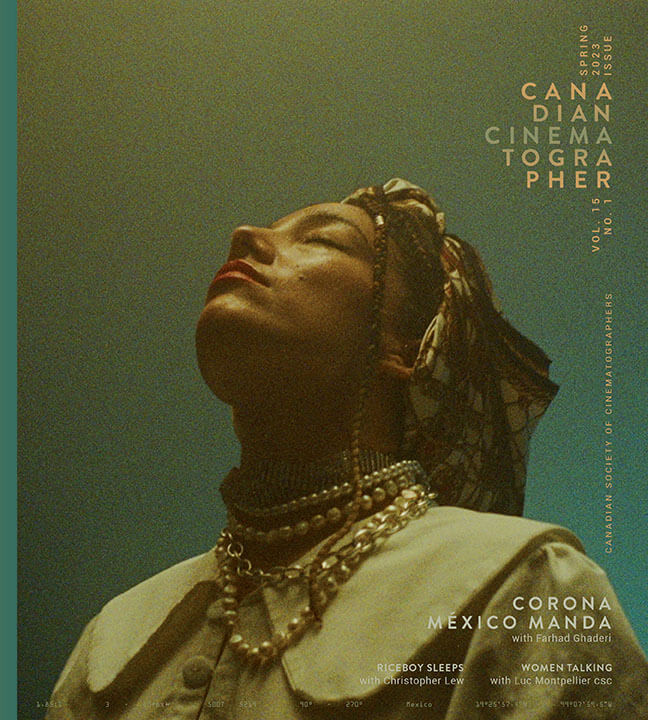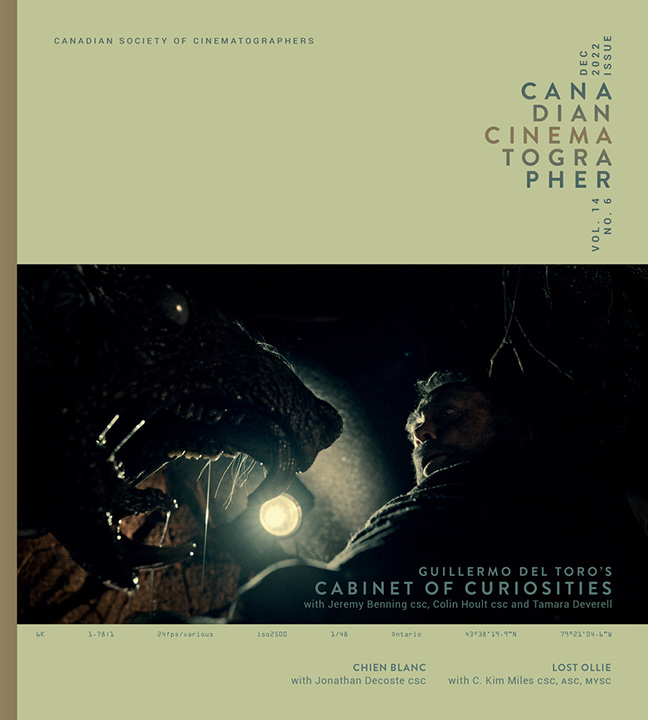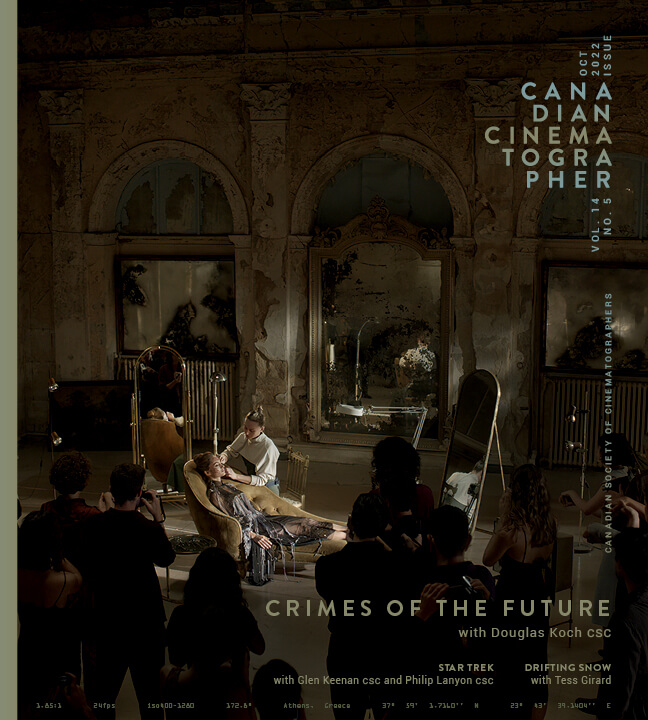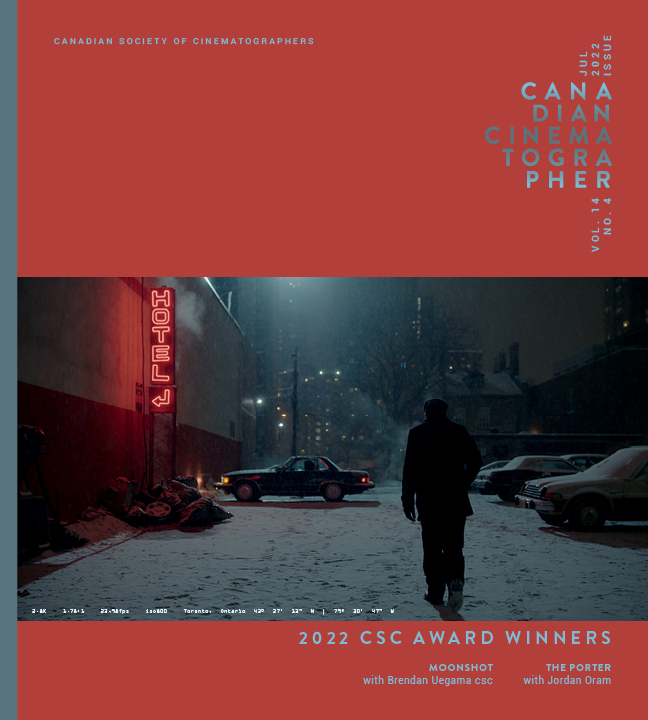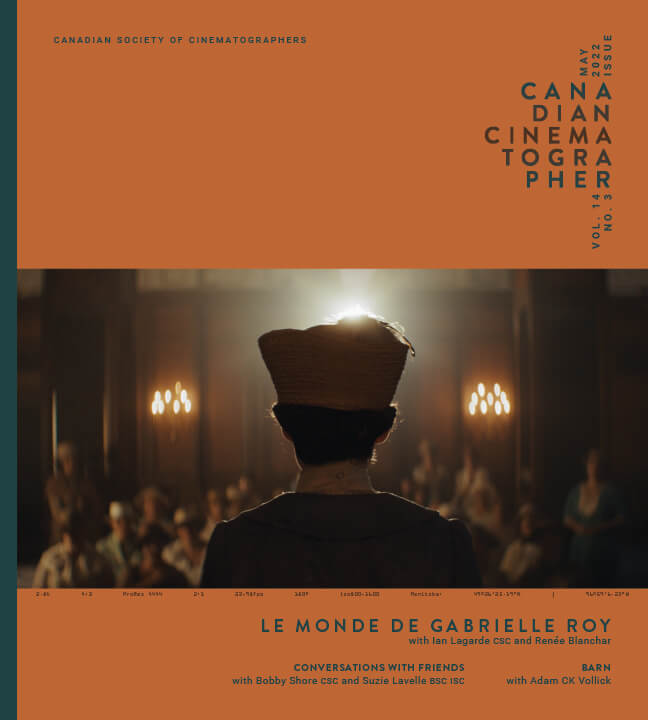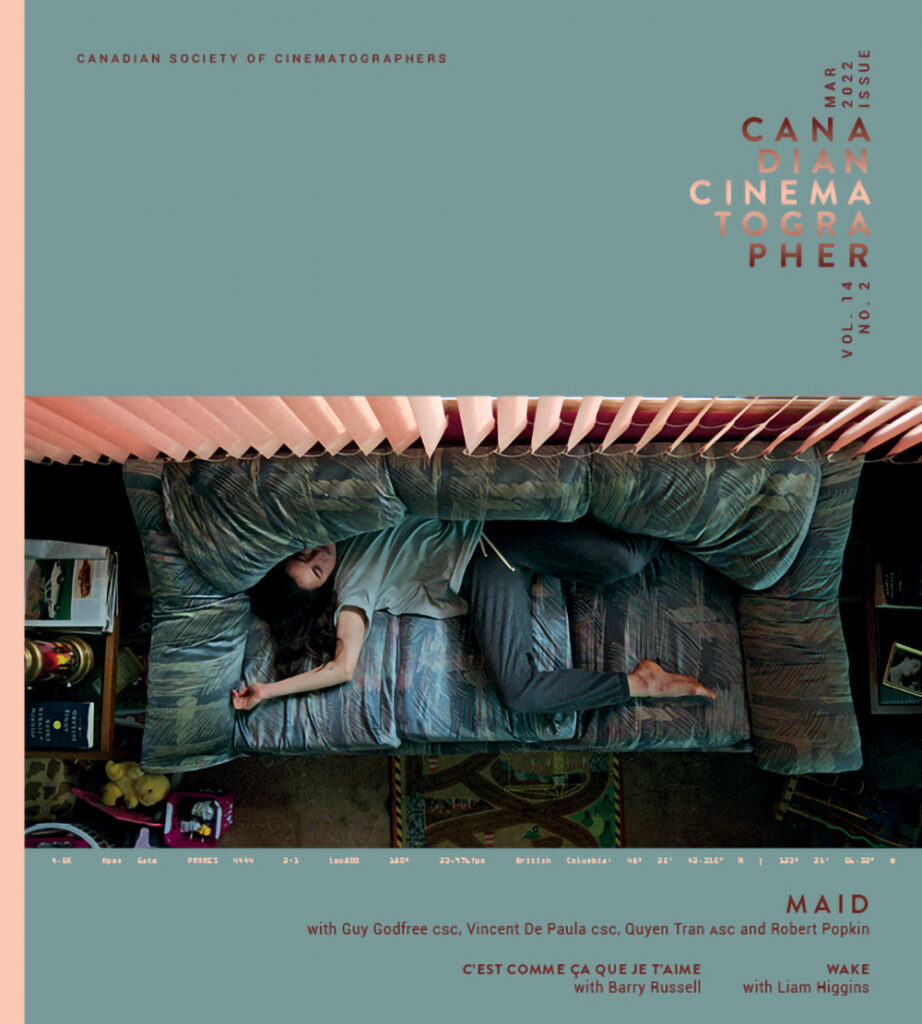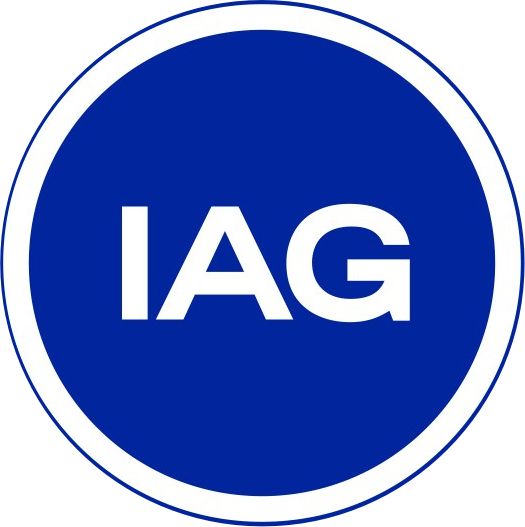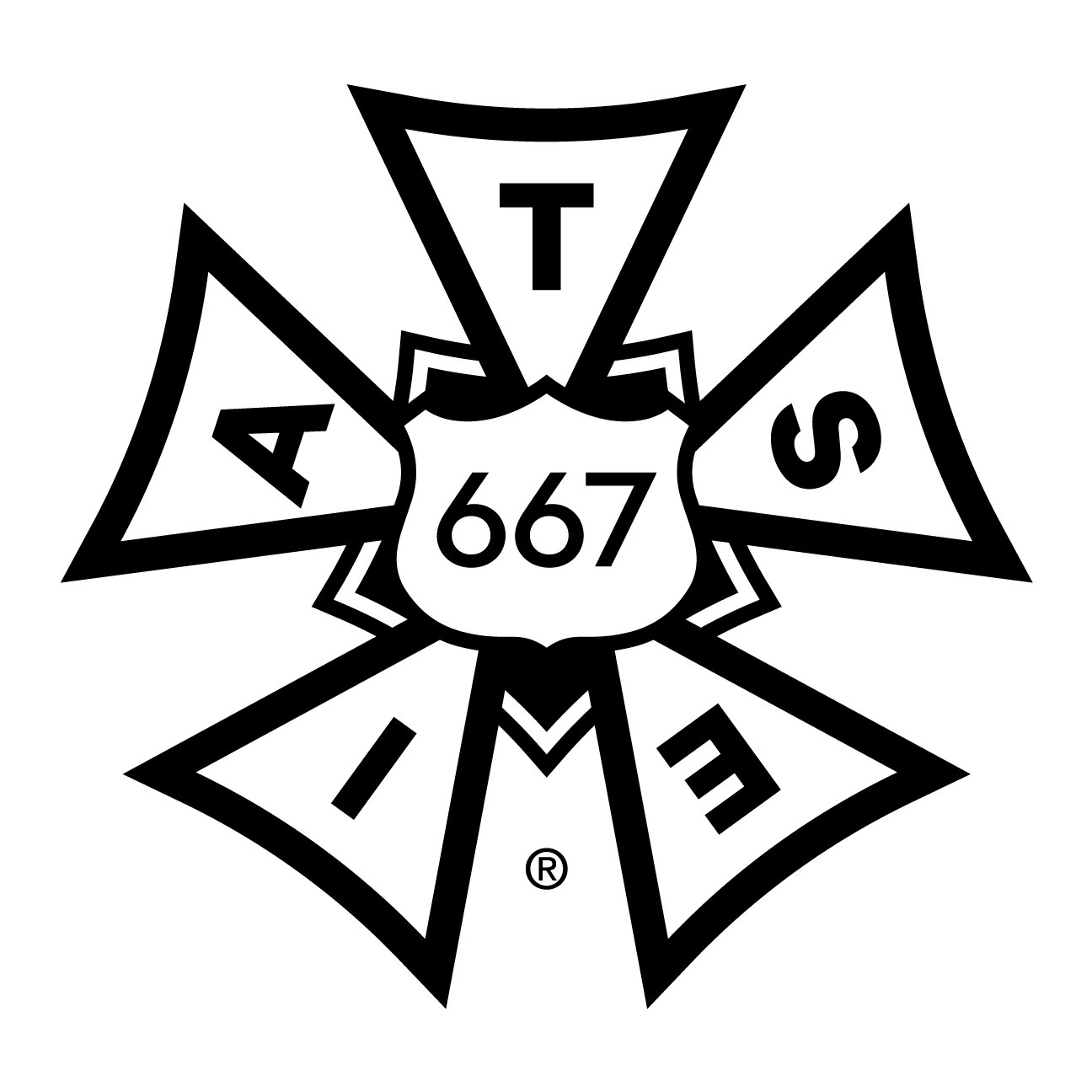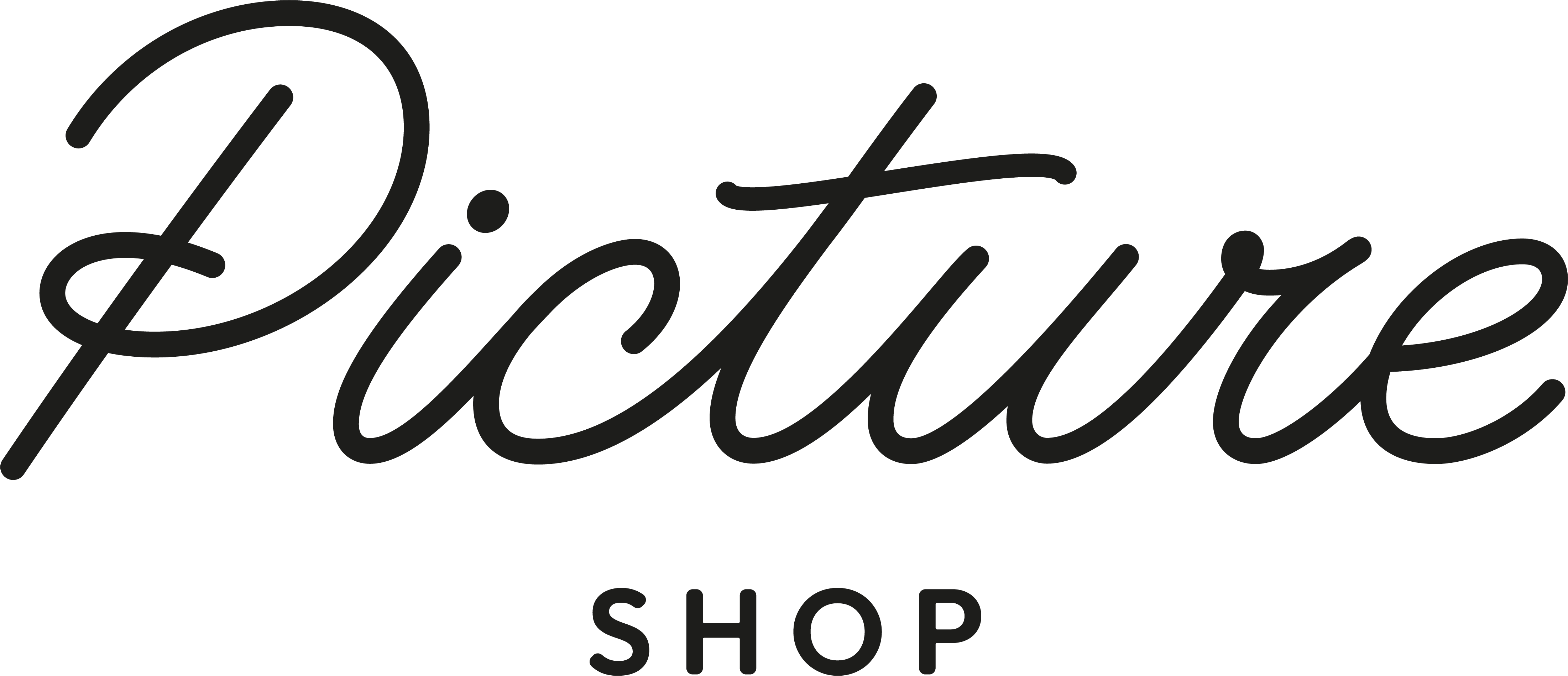
Fostering
Cinematography in Canada Since 1957
The CSC has grown with the country’s film and television industry, and continues to uphold the objectives for which the not-for-profit organization was founded.
2026 AWARDS | CALENDAR | SUBSCRIBE TO OUR NEWSLETTER
Latest News & Events
-
DEADLINE FOR ENTRIES IS JANUARY 31, 2026.
Find Out More -
The CSC welcomes the 2026-2027 Board of Directors.
Find Out More -
Meet the 2026-2027 Candidates!
Find Out More
Scheduled Workshops
The CSC is committed to improving access to opportunity in the film and television industry as well as professional development in the form of workshops, our internship program and the Field of View Mentorship program.
Follow us on Instagram
#QuanLuong, #AssociateMemberCSC @quanluong_ Here are some stills from a short documentary that I’m working on to wrap up my time hosting. I had a great time sharing and reflecting on my journey to end the year. There are a lot of talented cinematographers in the prairies that I get to collaborate with and learn from so I’m thankful to the CSC for giving me a chance to share a bit of what we do here. Til next time and happy holidays!

#QuanLuong, #AssociateMemberCSC @quanluong_ Last year I got a call to go to West Virginia to film the season finale of a ghost hunting/urban exploration show called “Ghosts Off Grid” with director John Barnard. For a superstitous person like me, it was an awesome show to work on. We spent 3 nights in the Trans-Allegheny Lunatic Asylum exploring the 26 acres building with lots if creepy moments. John had filmed there 10 years ago for another show, which was extremely helpful sometimes it was just the 2 of us walking through this massive 3-story complex filming broll. The whole time I kept wishing that a ghost would yank my easyrig then levitate me or throw me against a wall and the crew better get some of that on camera but sadly that never happened.

#QuanLuong, #AssociateMemberCSC @quanluong_ It can often be isolating working as a DP, you don’t get to work with other DPs and collaborate too often. A few years ago, I got to collaborate with @jessederock as a co-DP on a documentary for the National Centre for Truth and Reconciliation, directed by Janelle Wookey and produced by Jeremie Wookey. It was an interesting experience to have to exchange ideas and executions with another DP before relaying it to the small crew that we had. Fortunately, Jesse and I have worked together extensively in different capacities through out the years and have great respect for each other both as friends and colleagues. This made the collaboration go very smoothly and we were able to create some great looking images together. We also had a great crew that was patient and skilled to help us on this one.

#QuanLuong, #AssociateMemberCSC @quanluong_ Cruising in Gomorrah is an erratic horror short film that I got to shoot for Director Coby Friesen this year. This film came at a perfect time for me, after having spent a long time working on documentaries. Since the script is finished in the fall and we had to shoot when it’s warm out, we had the whole winter to get to know each other and prep as much as possible. Having the opportunity to truly put in the time for any size of project is few and far between. Over 8 months, we watched movies, find references, had countless conversations about the story and visual approach, we shot listed and storyboarded every single frame. This made the 2-day shoot run so smoothly, even with torrential rain that weekend that resulted in multiple long pauses. I was so lucky to have a supportive crew that tackled the rough weather always with a smile. As cinematographers, perhaps the most valuable thing we can have is a collaborator that inspires us and share the same values in filmmaking. Hopefully I’ll get to have more fulfilling collaborations like this one soon.

#QuanLuong, #AssociateMemberCSC @quanluong_
Working on documentaries come with a lot of unique life experience, and it gets even better when you’re on the road with good friends. I spent a couple of years working on a French tv show called C’est moi qui décide, which took me across the country filming in all sort of situations. The show lets the host and his film crew into the home with the kids for a few dags, while the parents go on a vacation. We got to do all kinds of crazy activities to entertain the kids, from DIY science experiments to taking over a fire truck and more. I worked mainly as a B Cam and took over as a DP on a handful of episodes but because the crew was small, I often helped with prelighting sets and interviews while the AC built the cameras and the DP talk through the scenes or approach with the director. Along with the spontaneity of the show comes the need to improvise and finding the best frames that compliments the other camera while staying on the right side of the axis and still finding the best light, which is something so crucial while filming documentaries that is hard to describe.
I was often the only anglophone on set so I started duolingo to learn French on my first episode and now I have a 1040 days streak. The best part about being on shows like these are of course the down time that you get to spend with your friends, and we were graciously given a couple days off between each episodes so there was lots of time to explore the cities we were in.

#QuanLuong, #AssociateMemberCSC @quanluong_ Tailor Made is a short documentary about Tam Nguyen, a Winnipeg-based tailor who came to Canada as a refugee in the 80s as part of the Vietnamese boat people. Since then he has dedicated his life to helping others, while racking up an impressive client list including Patrick Swayze, Ke Huy Quan, Samuel L. Jackson and many more. I shot this film with just a camera assistant, partly in Vietnamese, over 5 non-consecutive days, capturing wonderful images of Tam in his natural habitat. I remember having to stop him from trying to clean up his work station on the first day of filming because it just looked so good as is. Once I turned off the overhead lights, the place just had a natural colour contrast with the big north facing window and tungsten practicals. I just had to create more direction from the practicals with a light mat and filled in with a small tube in the background and an aputure MC off camera. The film earned a CSC Award nomination, had a great festival run through out North America, with an international premiere at DOC NYC, and won some awards at various film festivals. It was an eye opening journey for me to follow the film along to attend as many film festivals as I could and see how a short doc that I thought was so “local” and personal could affect so many kinds of audience in different ways.

#QuanLuong, #AssociateMemberCSC @quanluong_ My first narrative feature came in 2023 with director Stuart Stone and producer Adam Rodness called “Don’t F**k With Ghosts”. It was a mockumentary style film that had a loose shooting script and combined my love for documentary and scripted filmmaking. It was a 12 day shoot with a week of documentary style filming on real ghost hunts through out Manitoba and a week of fully crewed scripted portion that was informed by what happened in the first week. I shot the documentary style portion with close friends and collaborators Camera Operators Jesse de Rocquigny, Ryan Offenloch and sound mixer Kevin Bacon. We have been together in so many unique situations on other doc shows so we always knew how to collaborate on the fly, getting different shots that complimented each other, staying on the right side of the sun, and giving room for the boom while not getting it in the frame. I knew I wanted to keep the visual approach somewhat consistent and avoid having a drastic change when we move into the second half. We shot in a house that is about to be completely torn down, so we had no power to work with and the freedom to do whatever we wanted. Based on the blocking, I needed to be able to shoot 360 degrees on two levels with long takes and complicated stunt sequences. I was a big fan of the FX shot What We Do In The Shadows and through the CSC, I was able to reach the season 5 DPs Kim Derko CSC and David A Makin CSC, who graciously took the time to share some valuable tips and tricks with me.

#QuanLuong, #AssociateMemberCSC @quanluong_ I work on a lot of documentaries and docu-series, which allows me to travel extensively over the last few years. I’ve always been inspired by docu-series like Parts Unknown, Chef’s Table and Departures. This time last year, I was on my 90th flight of the year, filming the season 5 of APTN’s documentary series Taken. This was an important show that focuses on solving the cases of missing and murdered Indigenous people in Canada, and honouring their stories. It was produced with tremendous care and respect. This show took me across the country to film interviews and b-roll, accompanied by 2 studio weeks, and dramatized re-enactments in Manitoba and Victoria, BC. I had a fantastic time collaborating with show runners Rebecca Gibson and Dinae Robinson on this show to keep it somewhat consistent with the previous 4 seasons shot between 2016-2019 while having the trust and freedom to add more of my sensibilities to this season. I also got to work with many new crew members on different portions of the show and learned so much from everyone.

